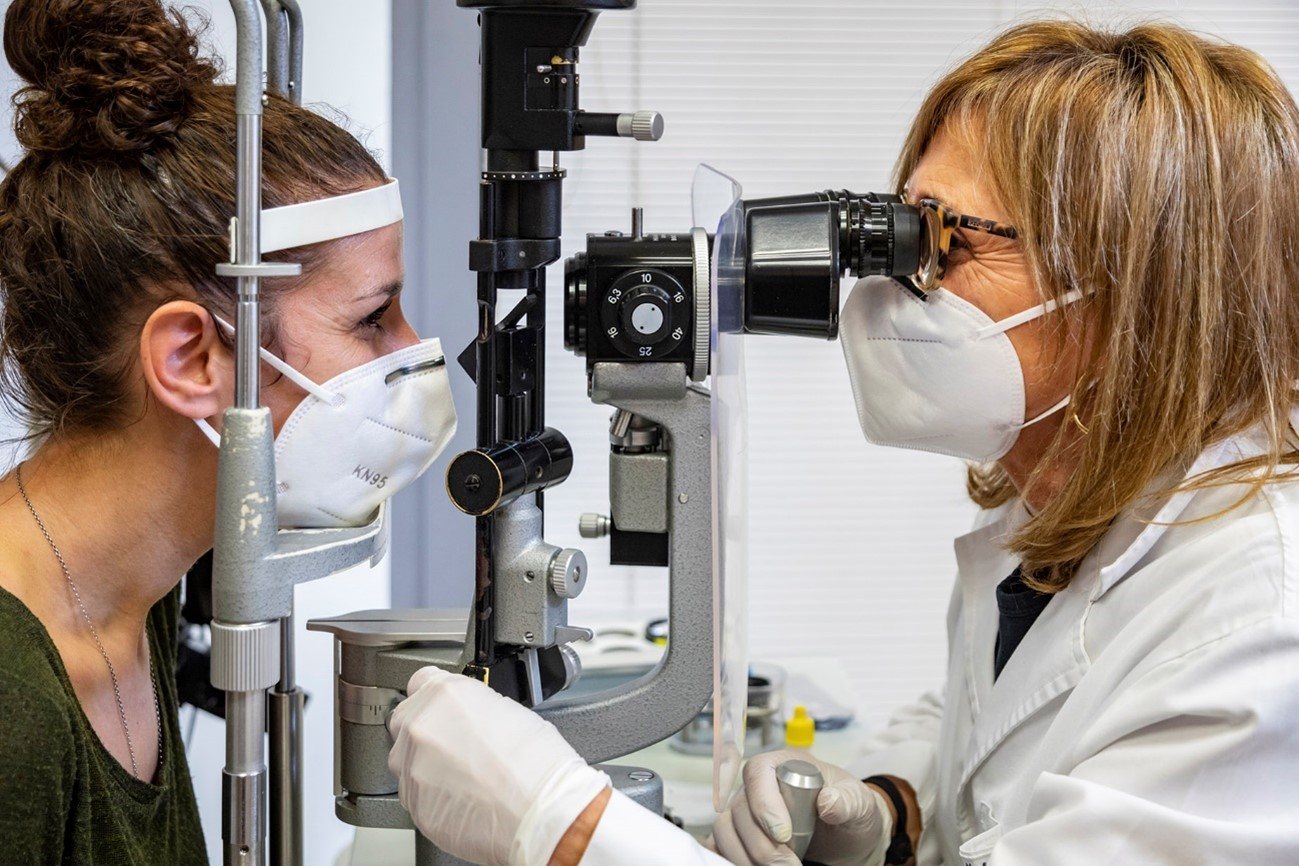
Even though this group age usually doesn’t need to visit the ophthalmologist so often, adults under their 40 years of age also need to take care of their vision and have their eyes examined occasionally.
The visual system development reaches maturity around the age of 20, and usually remains stable during the thirties, except in case of women, that may suffer from visual alterations in some cases during pregnancy. Therefore, during this period of life, eyeglasses and contact lenses correction barely change, thus making it an ideal moment to consider undergoing refractive surgery or vision correction surgery.
Nevertheless, as in any other age group, in case of eye trauma, pain, flashing lights, or any infection or other problem, it is necessary to go to the ophthalmologist.
In this age group, the most common eye problems are those associated with refraction: myopia, hyperopia and astigmatism.
Ocular trauma is also a fairly frequent problem at this stage. Around 75% of eye traumas affect men between 18 and 40 years of age. Half of such traumas take place at home, usually while carrying out reforms or practising sports and could be avoided by using vision protection methods (such as glasses or protective screens).
On the other hand, it is important that people with associated risk factors, such as diabetes, high blood pressure or a family history of eye disease, have their eye health closely monitored.
In these cases, the specialist usually recommends a periodic follow-up, which should be rigorously followed in order to treat possible ocular pathologies in an early manner.
Vision may experience changes during pregnancy due to fluid retention, increased blood pressure or hormonal changes. There are a wide variety of conditions that may be related to pregnancy, although these are often temporary changes that resolve after the baby is born or after breastfeeding.
Because of this, and because their diagnosis and treatment is so diverse, it is advisable to have your vision checked during pregnancy, especially in the case of pre-existing eye disease.
There are different day-to-day actions that help prevent the appearance of visual problems. We explain them below:
The practice of physical exercise stimulates blood circulation and oxygenation, and helps to maintain weight within the appropriate limits, which reduces the risk of diabetes and, consequently, diabetic retinopathy. When practicing sports, it is advisable to use protective glasses and sunglasses, as well as a helmet when possible and appropriate.
Another recommendation to improve long-term health is to avoid smoking, since it can increase the risk of suffering cardiovascular diseases that affect visual health and increase the chances of suffering cataracts and retinal degenerative diseases. In addition, in the case of women, smoking during pregnancy puts the baby at greater risk of suffering from retinopathy of prematurity, a disease that can cause blindness.
Sleep helps lubricate our eyes and removes dust, allergens or smoke particles that may have accumulated in them during the day.
Some sexually transmitted diseases, such as herpes type 1 and 2, chlamydia, gonorrhea, syphilis or AIDS can have adverse effects on vision.

Although most eye diseases appear after the age of 40, when talking about health, prevention is essential. It is important to monitor eye health at an early age in order to be able to detect possible diseases at an early stage.
For this purpose, it is recommended to have an annual ophthalmologic check-up. This quick and easy visit usually lasts no more than 90 minutes and is divided into two parts.
The optometry team asks a series of questions to learn about your medical history, along with a series of eye tests that help determine such characteristics as visual acuity, binocular function, intraocular pressure or ocular motility.
Next, and after administering drops to dilate the pupil if required, a thorough eye exam is performed to obtain a diagnosis. This examination includes a complete examination of the anterior segment and fundus.
In those cases that require it, specialists may consider additional tests to determine the final diagnosis.
Contact us or request an appointment with our medical team.